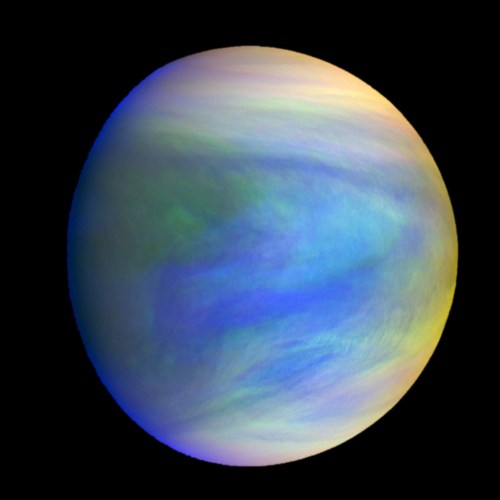
Venus may be our neighbor in the solar system, but there’s still a lot we don’t know about the planet. One particular mystery which has been puzzling astronomers for years is what exactly in going on in its clouds. Now, a new study suggests the weather on the planet could be affected by microorganisms similar to those which live in our atmosphere.
The clouds on Venus are thick and acidic, being composed mostly of sulfuric acid. They are also opaque and highly reflective, so they obscure most of the planet. This makes it hard for astronomers to get a clear look at the surface. “The difference between Earth and Venus is that on Earth most of the energy from the sun is absorbed at ground level while on Venus most of the heat is deposited in the clouds,” Sanjay Limaye, co-author of the new study, said in a statement.
The strange thing is that Venusian clouds have mysterious dark blotches within them, which scientists term “unknown absorbers.” These dark patches absorb ultraviolet and some visible light from the sun, which has profound effects on the planet’s weather. But researchers still aren’t sure exactly what these blotches are made of. “The particles that make up the dark splotches, have been suggested to be ferric chloride, allotropes of sulfur, disulfur dioxide, and so on, but none of these, so far, are able to satisfactorily explain their formation and absorption properties,” Yeon Joo Lee, the senior author of the study, explained in the same statement.
One bold suggestion for what the patches could be is that they are microorganisms of some kind. The authors point out that the particles they are studying are about the same size as the microorganisms in Earth’s atmosphere, and they have the same light-absorbing properties too. Even the great Carl Sagan suggested that the environment of Venus could be conducive to life.
Whatever the patches turn out to be, scientists are certain that they are affecting the planet’s atmosphere. Lee and colleagues have been observing the Venusian clouds using instruments like Japan’s Akatsuki probe and the European Space Agency’s Venus Express to see how they change over time, particularly in terms of the reflectivity of the clouds (called the albedo). In a roughly ten year period beginning in 2006, the amount of ultraviolet light reflected was halved and then returned to its original level. This meant much more solar radiation was absorbed at some points than at others, which affected the weather — especially in the upper atmosphere where winds can reach 200 miles per hour or more.
These results don’t only tell us more about the strange atmosphere on Venus, however. Environmental scientists say they can also teach us about the way solar radiation could affect the climate here on Earth.
The findings are published in The Astronomical Journal.
Editors' Recommendations
- NASA considers bird-like drones to explore Venus’s atmosphere
- See views of Venus flybys captured during two close encounters
- Two new ‘game-changing’ VR headsets could arrive at HTC’s ViveCon next week
- There could be life on Venus, groundbreaking study finds
- Microsoft’s Xbox Series X console could power xCloud servers next year